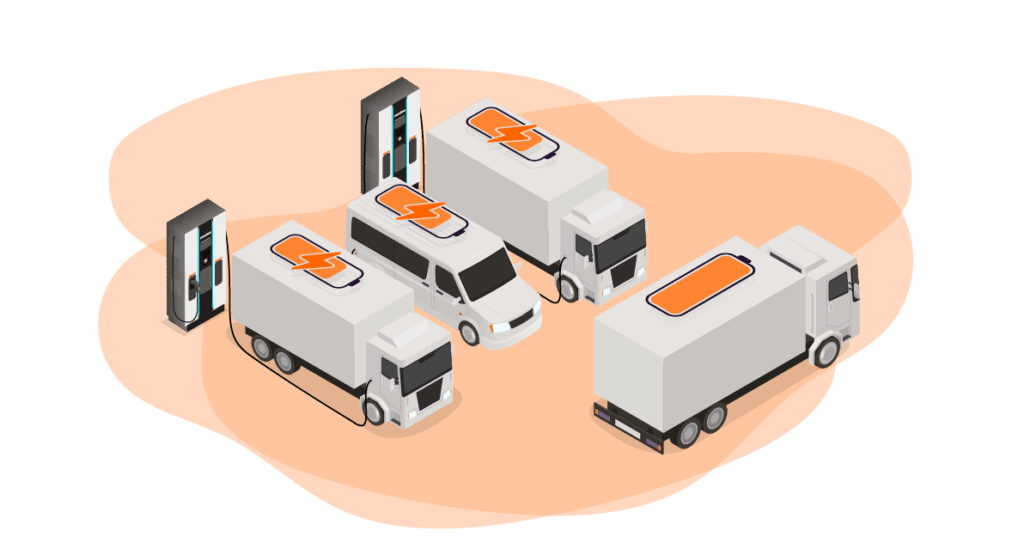Contact Info
2600 Technology Drive, Suite 100
Plano, Texas, 75074
United States
2600 Technology Drive, Suite 100
Plano, Texas, 75074
United States

Last Updated: August 13th, 2023 | Infrastructure
The DC charger has two handles, so it can charge two EVs at once, right? You would hope so. Most DC fast charging stations have two ports, but only one is actually charging at a time. When one port is engaged, the other shuts down because the charger has allocated all available power to the charging handle currently used. But advanced chargers, like Noodoe Exceed DC fast charging stations, provide true simultaneous charging. Depending on the situation, power flows to one or both charging ports. This kind of station is essentially two chargers in one as it occupies the same physical space as the first kind of charging station but can charge two vehicles at once.
These charging stations are just as convenient as a gas pump, even more so because you can find them at grocery stores and other convenient locations. But, how does simultaneous charging work in the real world? How much power does a car receive? Well, it’s easy.
Inside each DC charger is the power module(s). That’s essentially the power box. It helps process a certain amount of power, which flows to one charging handle or the other. That interior module setup can vary in appearance, depending on the charger itself.
These chargers don’t support simultaneous charging. They are a box with one power module inside that distributes its available power output to a single charging port. That one big module is why it can’t charge two cars at once. While the charger might have two ports, the single module can only assign power to one charging handle. These models have two charging ports so that different EVs can use them. However, those vehicles cannot use them at the same time.
The other kind of charger has more than one module inside. For example, an Exceed DC 120kW charger has four 30kW power modules inside, while the 180kW model has six of those modules. The internal modules are each assigned to specific charging ports. When only one EV is plugged in, that vehicle receives as much power as it can up to 120kW (or 180kW for the upgraded station). When a second car plugs in, the modules split 50/50 power between the two ports, offering each EV up to 60kW charge.
If the charging station offers true simultaneous charging, both vehicles receive power at the same time. This is true if the EVs plug in concurrently or one after another. Once the second car starts charging, the DC fast charger splits the power modules between the two EVs.
This is a real possibility with a charger sporting the flexible internal architecture that the Exceed DC chargers have. Remember that expandable 120kW fast charging station? Well, what if we put just one more power module inside? Now it has three on one side and two on the other and can offer 150kW to a single vehicle (say a Mustang Mach-e or a Porsche Taycan, both of which can take full advantage of such powerful charging infrastructure). If another EV suddenly rolls up and plugs in, the charging still splits, but it does so based on the modules inside. One charging gun will have 60kW available, and the other will have 90kW available. (If the charging station has a CHAdeMO adapter on one of the handles, that’s typically the one that offers less power because CHAdeMO charging guns can only transfer a maximum of 50kW anyway.)
It’s important to remember that situations differ greatly based on vehicles and their capacities. The Ford Mustang Mach-e, for example, can charge at a rate of 150kW or more at its top charging speed. The 2020 Chevy Bolt, however, can only accept about 50kW or so at its maximum charging speed.
Simultaneous charging is becoming a necessary feature for DC fast charging stations. This function allows a single charging station to act like two EV chargers. Choosing DC chargers with simultaneous charging is an efficient way to build out charging infrastructure without needing more space for EV chargers. It’s space-efficient – one charger takes us less space than two, and it’s economical because you’re really getting two chargers for the price of one.
| Cookie | Duration | Description |
|---|---|---|
| cookielawinfo-checkbox-analytics | 11 months | This cookie is set by GDPR Cookie Consent plugin. The cookie is used to store the user consent for the cookies in the category "Analytics". |
| cookielawinfo-checkbox-functional | 11 months | The cookie is set by GDPR cookie consent to record the user consent for the cookies in the category "Functional". |
| cookielawinfo-checkbox-necessary | 11 months | This cookie is set by GDPR Cookie Consent plugin. The cookies is used to store the user consent for the cookies in the category "Necessary". |
| cookielawinfo-checkbox-others | 11 months | This cookie is set by GDPR Cookie Consent plugin. The cookie is used to store the user consent for the cookies in the category "Other. |
| cookielawinfo-checkbox-performance | 11 months | This cookie is set by GDPR Cookie Consent plugin. The cookie is used to store the user consent for the cookies in the category "Performance". |
| viewed_cookie_policy | 11 months | The cookie is set by the GDPR Cookie Consent plugin and is used to store whether or not user has consented to the use of cookies. It does not store any personal data. |
